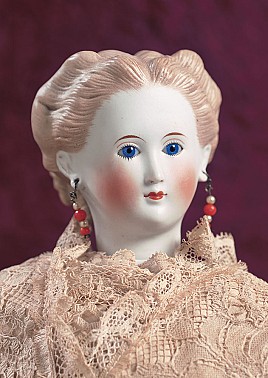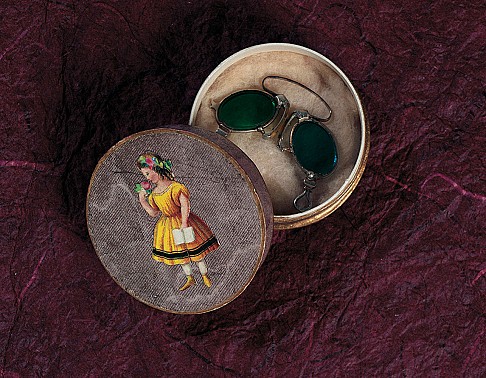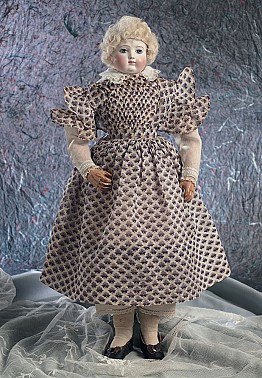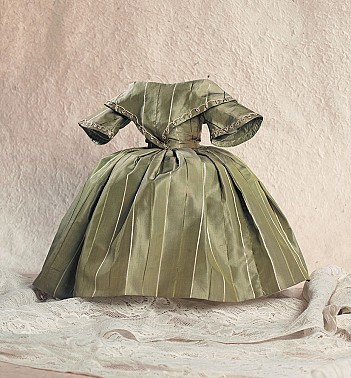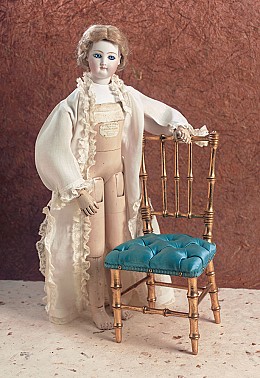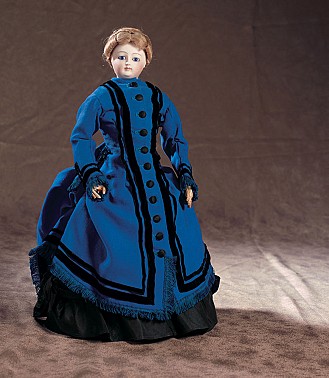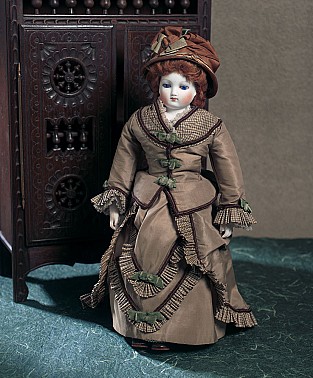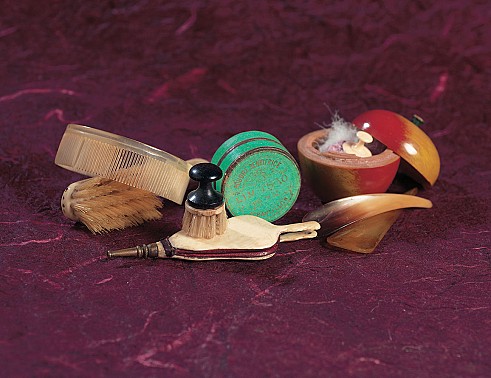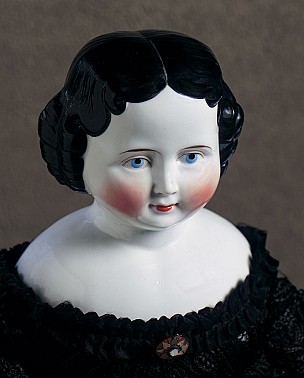Lady Doll by Alexandre Dehors with Signature
Lot #80
18" (46 cm). The lady doll has perfectly oval-
shaped pressed bisque swivel head on kid-edged
bisque shoulder plate with delicately modeled
bosom, deposed Dehors neck attachment allowing
the head to tilt forward and lean coquettishly
from side to side (rather than simply swivel),
slightly elongated throat, high domed forehead,
high cheekbones, almond shaped cobalt blue glass
enamel inset eyes, dark eyeliner encircles the
eye sockets, modeled eyelids, lightly feathered
brows and lashes, aquiline nose, accented
nostrils and eye corners, closed mouth with
upturned lip corners and accented lips, shaped
chin with centered dimple, defined philtrum, well
defined unpierced ears. The modeling is
exceptional with details of hand-pressing at
temples and above the cheek bones. The doll has a
kid fashion body with slightly padded bosom, tiny
waist, accentuated derriere, gusset jointed hips
and knees, kid upper arms, bisque arms from above
the elbows with separately sculpted fingers,
defined knuckles and nails, separate thumb. The
wig is original mohair hand-stitched into rolls
at back of head and held by snood, with arranged
curls at forehead and neck. The costume is
original, of taupe and bronze striped silk,
trimmed with blue silk ribbons and lace, with
demi-train, undergarments, leather shoes. The
doll is marked _Dehors Brevete_ on back
shoulderplate. Alexandre Dehors, circa 1866. The
deposed Dehors head articulation allowed the
doll _to nod its head, tilt it from side to side,
or raise or lower it modestly or triumphantly_,
according to a reviewer of dolls portrayed at the
1867 Exposition Universelle in Paris. Signed
examples of the very rare doll are extremely
rare. Those with portrait faces are virtually
unknown to exist; the facial resemblance to the
beloved Empress Eugenie is remarkable, indicating
that the model may have been created specifically
for that Exposition, which was the crowning
showpiece of the Napoleon III epoch. The doll is
preserved in impeccable, unplayed-with original
condition, including body, wig and costume.


















